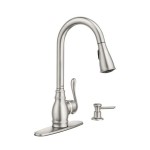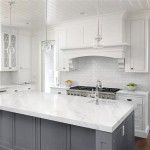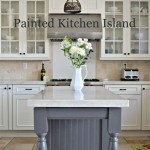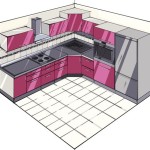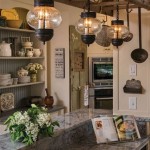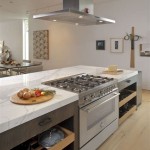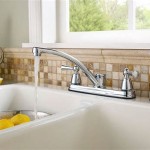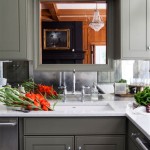Trim For Top Of Kitchen Cabinets: Enhancing Aesthetics and Functionality
Kitchen cabinetry is a significant investment, impacting both the functionality and aesthetic appeal of the heart of the home. While selecting cabinet style, materials, and hardware are primary considerations, the finishing touches, particularly the trim used at the top of the cabinets, play a crucial role in achieving a cohesive and refined look. Trim, strategically placed above kitchen cabinets, serves multiple purposes, adding architectural interest, concealing imperfections, and even providing opportunities for integrated lighting or storage. This article explores the various types of trim suitable for the tops of kitchen cabinets, their respective benefits, and factors to consider when making a selection.
Types of Trim for Kitchen Cabinets
The market offers a wide array of trim options, each distinguished by its material, profile, and intended style. Understanding these distinctions is essential for selecting the appropriate trim that complements the overall kitchen design.
Crown Molding: Crown molding is arguably the most popular choice for topping kitchen cabinets. It is a decorative molding that springs from the wall and cabinet to the ceiling, creating a sweeping, elegant transition. Crown molding is available in various materials, including wood, MDF (Medium-Density Fiberboard), and polyurethane. Wood crown molding offers a classic, traditional aesthetic and can be stained or painted to match or complement the cabinets. MDF is a cost-effective alternative that provides a smooth surface for painting. Polyurethane crown molding is resistant to moisture and warping, making it suitable for kitchens with high humidity. The profile of the crown molding can range from simple, clean lines to intricate, ornate designs, allowing for customization to suit diverse design preferences.
Light Rail Molding: Light rail molding is designed to conceal under-cabinet lighting fixtures, providing a clean, finished look while directing light onto the countertop. It is typically installed along the bottom edge of the upper cabinets, but it can also be used as a decorative trim at the top, offering a dual purpose. Light rail molding is commonly made of wood or MDF and is available in various styles to match the cabinets. Its primary function is to hide the unsightly glare of the light fixtures, creating a more ambient and functional lighting scheme. When used at the top of cabinets, it can add a subtle detail that enhances the overall design.
Scribe Molding: Scribe molding is a thin, flexible strip of wood or MDF used to fill gaps between the cabinets and the wall or ceiling. It is particularly useful in situations where the walls or ceiling are not perfectly straight or level. Scribe molding can be easily cut and shaped to conform to irregular surfaces, creating a seamless transition between the cabinets and the surrounding structure. While not primarily a decorative trim, scribe molding is essential for achieving a professional, finished look. It prevents unsightly gaps that can collect dust and debris, and it ensures that the cabinets appear to be custom-fitted to the space.
Baseboard Molding: While typically used at the base of walls, baseboard molding can also be creatively employed as a decorative trim at the top of kitchen cabinets. It offers a different aesthetic than traditional crown molding, providing a more substantial and grounded look. Baseboard molding is available in various styles, from simple, flat profiles to more ornate designs with decorative details. It can be used to create a more traditional or transitional style in the kitchen. When using baseboard molding as a top trim, it is important to consider the scale and proportion of the cabinets and the overall room design.
Panel Molding: Panel molding, also known as applied molding, consists of decorative strips that are applied directly to the surface of the cabinet or wall. It can be used to create a variety of decorative effects, such as raised panels, recessed panels, or intricate geometric designs. Panel molding is typically made of wood or MDF and can be painted or stained to match the cabinets. When used at the top of cabinets, it can add a layer of visual interest and texture. It is a versatile option that allows for customization and creativity in the kitchen design.
Decorative Corbels and Brackets: Decorative corbels and brackets are ornamental supports that can be attached to the underside of the cabinets or to the wall above the cabinets. They are often used to add a touch of elegance and sophistication to the kitchen design. Corbels and brackets are available in various styles, from traditional, ornate designs to more modern, minimalist styles. They can be made of wood, metal, or resin and can be painted or stained to match the cabinets. When used at the top of cabinets, they can provide a visual break between the cabinets and the ceiling, adding architectural interest and character to the space.
Factors to Consider When Choosing Trim
Selecting the appropriate trim for the top of kitchen cabinets requires careful consideration of several factors, including the overall kitchen design, the style of the cabinets, the size of the room, and the desired aesthetic. A well-chosen trim can enhance the beauty of the kitchen and create a cohesive, polished look.
Style of the Kitchen: The style of the kitchen is a primary consideration when choosing trim. A traditional kitchen with ornate cabinets may benefit from crown molding with intricate details or decorative corbels and brackets. A modern kitchen with sleek, minimalist cabinets may be better suited to simple, clean-lined trim, such as light rail molding or scribe molding. The trim should complement the overall design and enhance the architectural style of the kitchen.
Cabinet Height and Room Size: The height of the cabinets and the size of the room should also be considered when choosing trim. In a kitchen with low ceilings, a large, ornate crown molding may overwhelm the space. In a larger kitchen with high ceilings, a more substantial trim may be necessary to fill the space and create a balanced look. The trim should be in proportion to the cabinets and the room, creating a harmonious and visually appealing design.
Material and Finish: The material and finish of the trim should be compatible with the cabinets and the overall kitchen design. Wood trim offers a classic, traditional aesthetic and can be stained or painted to match or complement the cabinets. MDF trim is a cost-effective alternative that provides a smooth surface for painting. Polyurethane trim is resistant to moisture and warping, making it suitable for kitchens with high humidity. The finish of the trim should be durable and easy to clean, ensuring that it will withstand the wear and tear of daily use.
Purpose and Functionality: The purpose and functionality of the trim should also be considered. Light rail molding is designed to conceal under-cabinet lighting fixtures, while scribe molding is used to fill gaps between the cabinets and the wall or ceiling. Decorative corbels and brackets can provide visual support and add architectural interest. The trim should serve a practical purpose while also enhancing the aesthetic appeal of the kitchen.
Budget: The budget is an important consideration when choosing trim. Wood trim is typically more expensive than MDF or polyurethane trim. Ornate, custom-designed trim can also be more expensive than simple, standard trim. It is important to establish a budget before beginning the selection process and to choose trim that fits within the budget while still meeting the desired aesthetic and functional requirements.
Installation and Considerations
Proper installation is crucial for ensuring that the trim looks its best and functions as intended. It is generally recommended to hire a professional contractor to install the trim, as they have the expertise and tools necessary to ensure a precise and seamless installation. However, experienced DIYers may be able to install the trim themselves, provided they have the necessary skills and equipment.
Preparation: Before installing the trim, it is important to prepare the surfaces properly. The cabinets and walls should be clean and free of any debris or imperfections. Any gaps or cracks should be filled with caulk or spackle. The trim should be cut to the correct length and angle, using a miter saw or other appropriate cutting tool. It is important to measure accurately and to cut the trim precisely to ensure a seamless fit.
Attachment: The trim can be attached to the cabinets using nails, screws, or adhesive. Nails and screws provide a more secure attachment, while adhesive is easier to use and can be less visible. The choice of attachment method will depend on the type of trim, the material of the cabinets, and the desired aesthetic. It is important to use the appropriate fasteners and to drive them in straight and flush with the surface of the trim.
Finishing: After the trim is installed, it may be necessary to finish it. This may involve filling nail holes with wood filler, sanding the surface smooth, and applying a coat of paint or stain. The finish should match or complement the cabinets and the overall kitchen design. It is important to use high-quality paint or stain and to apply it evenly to ensure a durable and attractive finish.
Sealing: To protect the trim from moisture and damage, it is important to seal it properly. This can be done by applying a coat of polyurethane or varnish. The sealant will create a barrier that repels water and prevents the trim from warping or cracking. It is important to choose a sealant that is compatible with the type of wood and the finish of the trim.
In conclusion, the selection and installation of trim for the top of kitchen cabinets is a crucial step in achieving a cohesive and refined kitchen design. By considering the various types of trim available, the factors to consider when choosing trim, and the proper installation techniques, homeowners can enhance the beauty and functionality of their kitchens.

How To Get A Custom Cabinet Look Using Trim Sincerely Marie Designs

Adding Moldings To Your Kitchen Cabinets Remodelando La Casa

How To Install Crown Molding On Cabinets Young House Love

3 Ways To Enhance Your Kitchen With Crown Molding

Installing Crown Molding On Top Of Kitchen Cabinets Van Dyke S Restorers

11 Kitchen Cabinet Crown Molding Ideas For Your

Closing The Space Above Kitchen Cabinets Remodelando La Casa

Diy Stacked Kitchen Cabinets Frills And Drills

Crown Molding For Shaker Kitchen Cabinets

Straight Lines Above And Below

